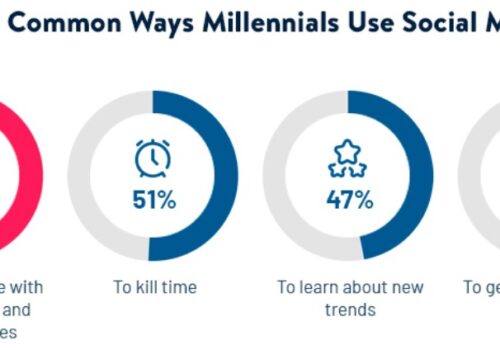The Voice over Internet Protocol (VoIP) market is rapidly expanding, indicating a shift in how companies connect with their customers.
With VoIP, you can interact with customers over the web rather than the phone, making it a more effective means of communication and potentially shortening your sales cycle.
Therefore, if you haven’t already, it’s high time to consider adopting a VoIP solution.
If you’re still not convinced, consider the following list of the key essential VoIP statistics to be aware of.
| Aspect | Statistic |
|---|---|
| Consumer Preference for Phone Conversations | 62% |
| Customer Engagements via Phone | 92% |
| Customers Hanging Up after 1 Minute on Hold | Over 60% |
| Customer Expectation for Quick Responses | 47% |
| Lead Conversion Rate within the First Minute | Up by 391% |
| Average Savings with VoIP Switch | 30% to 50% |
| Businesses Using VoIP Systems | Approx. 31% |
| US VoIP Lines Added (2010-2018) | Over 35 million |
| Increase in VoIP Usage During Pandemic | Over 212% |
| AI in Customer Interactions (Next 5-10 Years) | 95% |
| VoIP Market Value Projection by 2026 | $102.5 billion |
| Mobile VoIP Market Value by 2024 | $145.76 billion |
| North America’s VoIP Market Share | Approx. 40% |
| Remote Employees Increasing VoIP Demand | Nearly 1 in 3 employees |
| VoIP Communication Cost Savings | Up to 50% |
| Companies Reporting Cost Savings in Cloud | 82% |
| VoIP Costs Increase by 2024 | Only 3% |
| VoIP Services Market Worth by 2024 | $194.5 billion |
Stats on Lead Behavior
Because consumer behavior is changing, companies have begun to implement VoIP systems. Customers have increased standards and expectations, and the lengthy process of engaging with once-sufficient leads will no longer be sufficient.
According to research, 32 percent of customers who phone a company don’t want to be kept on hold. Consider the opportunities you’re passing up because you’re keeping them waiting too long!
Image Credit: Pexels
- Consumers prefer phone conversations (62%), emails (46%), & live chat (37%), rather than self-service (14%), or bots (13 percent ). (Loyalty 360)
- Phone conversations account for 92 percent of all client engagements. (Salesforce)
- If a customer is placed on hold for more than one minute, more than 60% of them will hang up. (Velaro)
- Customers expect quick responses in 47% of cases (Loyalty 360).
- Inside Sales reports that leads who are reached within 5 minutes are nine times more likely to convert.
- Lead conversions rise by 391 percent when you answer inside the first minute (Xoombi)
- On average, businesses can save around 30% to 50% by switching to VoIP.
- According to recent studies, almost one-third of businesses, which is about 31%, are currently utilizing VoIP systems.
- From 2010 to 2018, US businesses added over 35 million VoIP lines, reaching 41.6 million.
- The usage of VoIP (Voice over Internet Protocol) and video conferencing saw a significant increase of over 212% during the pandemic.
- It is estimated that within the next 5 to 10 years, AI will be responsible for 95% of customer interactions.
- Businesses can save a significant amount of money, between 50-75%, by switching to VoIP.
- According to a survey, 67% of mobile workers reported increased productivity with VoIP technology.
- VoIP technology saves data by not transmitting any sound during moments of silence in phone calls.
- 46% of illegal calls are made using VoIP technology.
- The global market for Voice over Internet Protocol (VoIP) is projected to reach $102.5 billion by 2026, indicating significant growth in the industry.
- By 2024, the mobile VoIP market is expected to reach a value of $145.76 billion.
- North America accounts for approximately 40% of the worldwide market for Voice over Internet Protocol (VoIP).
- Nearly 1 in 3 employees now work at remote companies, increasing demand for VoIP
- VoIP can save up to 50% on communication costs by allowing users to make phone calls over the Internet instead of traditional phone lines.
- 82% of companies report a cost saving when moving to the cloud.
- VoIP costs to rise by only 3% by 2024.
Statistics on VoIP Adoption
Image Credit: Pexels
20.61 percent of organizations are migrating to VoIP phone systems from traditional phone lines. (Blueface)
- Companies are abandoning traditional telecommunications and on-site phone networks in favor of Apps (e.g. Skype, Google Meet): 76 percent Cloud-based software (e.g. Novocall, Nextiva): 69 percent Smartphone service providers (e.g. AT&T, Verizon): 88 percent (Nextiva)
- Auto attendants (57 percent) & automatic call distribution (29 percent) are popular features in VoIP software for small enterprises. (Software Advice) VoIP technology has already been adopted by 24.5% of enterprises. (Blueface)
- VoIP systems are used by 31% of companies for their regular operations. (Multicom) SMS has already been implemented by 26.47 percent of small firms employing VoIP systems. (Telzio) Professionals use web-based voice services like VoIP systems or Unified Communications (UC) platforms in 27.69 percent of cases. (Nextiva)
- It has been found that approximately 31% of businesses are currently using VoIP (Voice over Internet Protocol) systems.
- In the United States, businesses added over 35 million VoIP lines between 2010 and 2018.
- The use of VoIP and video conferencing increased by over 212% during the pandemic.
The following elements influence a buyer’s final buying decision when considering a VoIP business provider:
- 69.5 percent reliability
- 19 percent discount
- Specifications: 5%
- 4 percent flexibility
- 2.5 percent scalability
(Source: Blueface)
Statistics on VoIP Cost Savings
Image Credit: Pexels
- After converting to a VoIP system, a company can save anywhere from 30% to 50% on average. (Telzio)
- Small firms that employ VoIP will save around 90% on startup expenditures. (Startupanz)
- Businesses save 50 percent to 75 percent on communication expenditures when implementing VoIP software. (Bullseye Telecommunications)
- VoIP expenses are predicted to drop by as far as 5% each year. (Gartner)
- Small firms that have moved to VoIP systems have saved up to 40 percent on local calls and 90 percent on international calls. (TechCo)
- Each salesperson can save roughly 32 minutes per day by using VoIP. (Startupanz)
- The cost of using VoIP is typically between $20 to $30 per user per month.
- It is important to note that businesses can save a significant amount of money by switching to VoIP. On average, businesses can expect to save between 30% to 50% on their communication costs.
- It is expected that the costs of VoIP will decrease annually between 3% to 5%.
- On average, businesses save 32 minutes per day on calls with VoIP.
VoIP AI Statistics
- The market for voice recognition software, which is essential for VoIP, is set to exceed $50 billion by 2030.
- AI’s impact on VoIP is expected to significantly influence customer interactions by 2025, with up to 95% of interactions possibly affected.
FAQ
📞 What is VoIP (Voice over Internet Protocol)?
VoIP, or Voice over Internet Protocol, is a technology that enables voice communication and phone calls to be transmitted over the internet instead of traditional telephone lines. It converts audio signals into digital data packets for transmission.
💼 How is VoIP used in businesses?
VoIP is widely used in businesses for cost-effective and efficient communication. It allows for conference calls, virtual meetings, and remote work capabilities, enhancing collaboration among employees and reducing communication expenses.
💰 Are there cost-saving benefits to using VoIP?
Yes, VoIP offers significant cost-saving benefits for businesses and individuals. It typically has lower call rates, especially for international calls, and eliminates the need for maintaining a traditional phone system, reducing hardware and maintenance costs.
💻 How does VoIP work over the internet?
VoIP works by converting voice signals into digital data packets and transmitting them over the internet. These packets are then reassembled at the receiving end to recreate the original voice signal.
🌍 How does VoIP affect international calling?
VoIP significantly reduces the cost of international calling, making it more affordable for individuals and businesses to communicate across borders without high call rates.
📱 What devices can be used for VoIP calls?
VoIP calls can be made using various devices, including smartphones, computers, IP phones, and even traditional landline phones with VoIP adapters.
Quick Links:
- Top Email Marketing Statistics
- Instagram Statistics
- Blogging Statistics
- Pinterest Statistics
- Mobile eCommerce Statistics
Conclusion: VoIP Statistics 2025
Voice over Internet Protocol (VoIP) is a technology that allows voice communication over the Internet, offering cost-saving benefits and enabling efficient communication for businesses and individuals.
VoIP has transformed global communication, with increasing adoption and a wide range of devices used for VoIP calls.
Its affordability and versatility make it a popular choice for modern communication needs.
Sources: Velaro, Novocall, Salesforce, Persistence Market Research, Finances Online, Dmgconsult, GlobeNewswire, Harbor networks, Spectrumvoip







